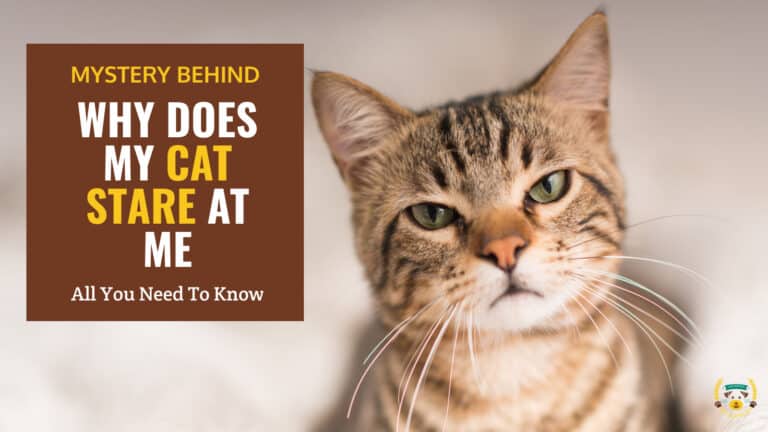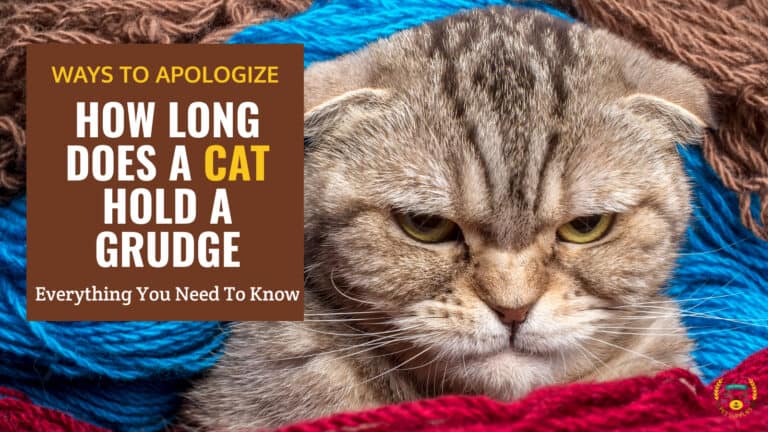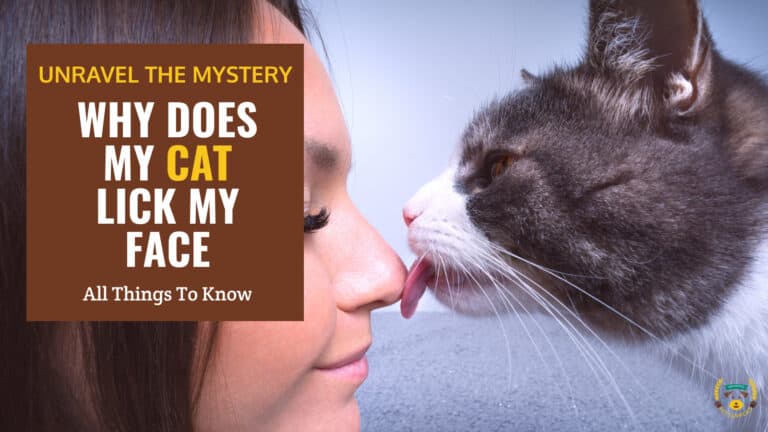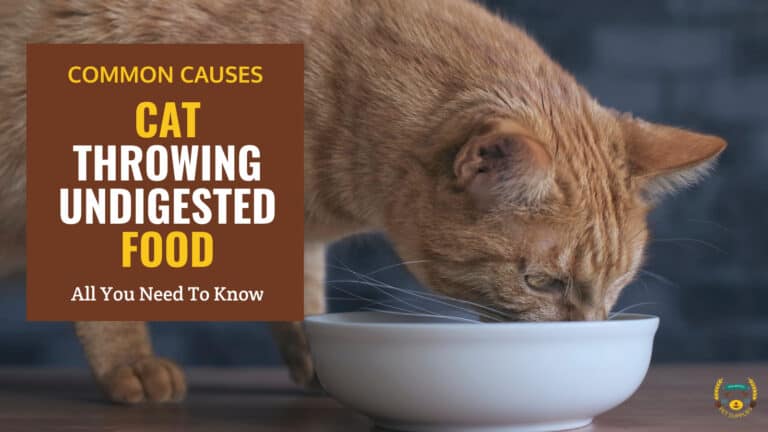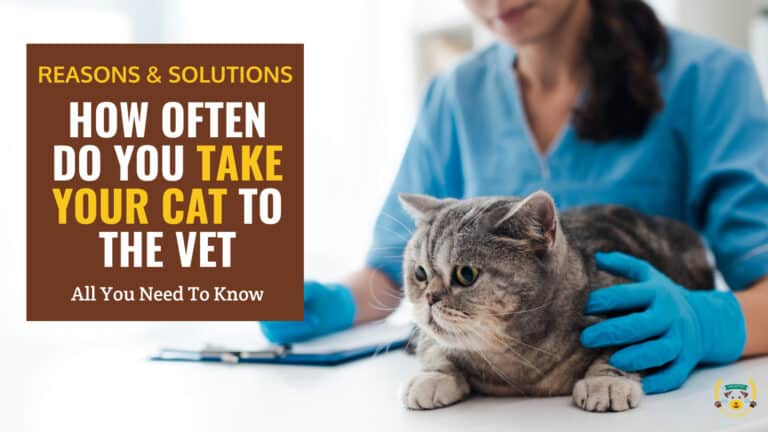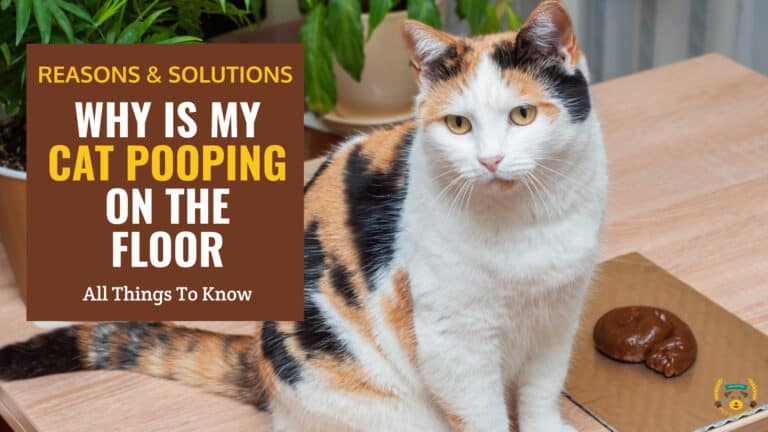Why Does My Cat Follow Me Everywhere?
Last updated: March 22, 2024
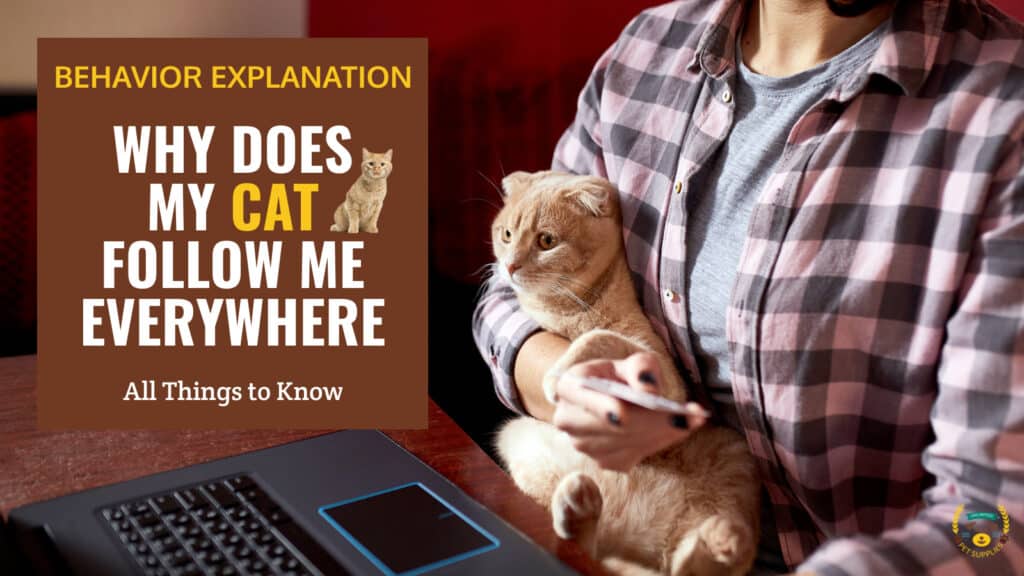
Summary
- It's normal for cats to follow their owners around the house.
- Cats are territorial animals, and they may follow their owners around to mark their territory.
- Cats are curious creatures, and they may follow their owners around to see what they're doing.
- Cats are social animals, and they may follow their owners around for companionship.
- Some cats follow their owners for security, while others follow for attention or out of boredom.
- If your cat's following behavior is excessive or disruptive, you can try training them to be more independent or providing them with more environmental enrichment.
- If your cat's following behavior is accompanied by other signs of distress, such as excessive vocalization or destructive behavior, you should consult with a veterinarian to rule out any medical problems.
- In some cases, cats may develop separation anxiety, which can lead to excessive following behavior. If you think your cat may have separation anxiety, you should seek professional help.
It's a common scenario - you get up from the couch and your feline companion is immediately at your heels, walking behind you from room to room. You open a door and they eagerly slip past your feet, perpetually shadowing your every move.
If your cat insists on being practically glued to you, you've probably wondered - why does my cat follow me everywhere? This common cat behavior has several possible explanations.
In this article, we will cover the possible explanations for your cat's (weird) behavior. Let's get started!
In Summary, Why Does My Cat Follow Me Everywhere?
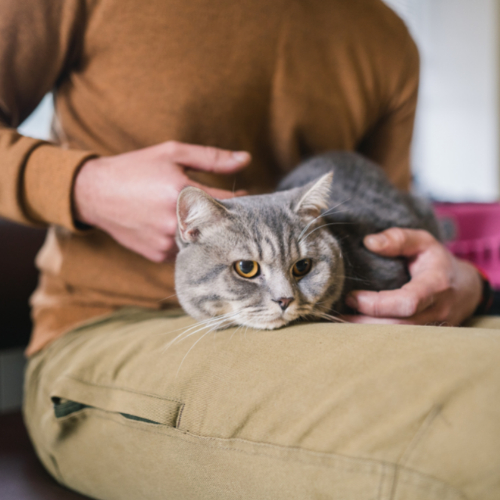
For cats, following their trusted human caretakers is perfectly natural. As solitary hunters, cats are hardwired to form close bonds with their human families for companionship and security. Following you throughout the house allows them to stay near you and know your whereabouts at all times.
Additionally, because cats depend on us for food, water, playtime, and access to favorite nap spots, they associate us with all the resources they value. Sticking close ensures they'll have what they need.
Cats are also incredibly curious creatures driven to investigate anything novel or interesting in their environment. So when you get up and move from room to room, they may trail along just to see what you're up to. After all, you're the most fascinating thing in their world!
While excessive following can sometimes signal anxiety, in most cases it's completely normal and a sign of your cat's devotion. Understanding why this instinct drives our feline companions can help us appreciate their charming and quirky natural behavior.
Exploring the Cat-Human Bond
Before getting into explanations of your cat's following behavior, let's first explore the bond between cats and humans:
Cats Form Strong Bonds with Their Humans
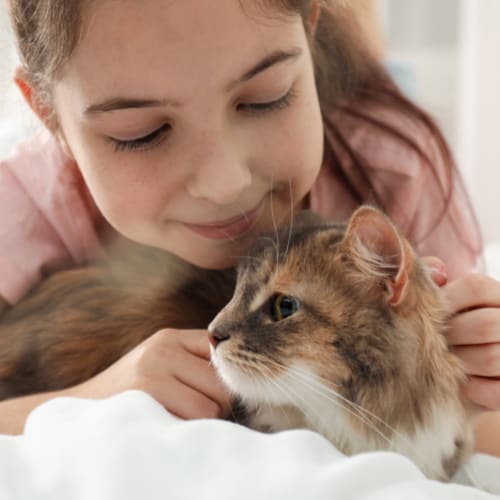
Cats are often perceived as aloof and independent, but research shows they actually form deep attachments with their human caregivers. According to attachment theory, infants view their primary caretaker as a secure base from which to explore the world. This also applies to the cat-human relationship. Cats see their owners as a source of comfort and security.
This attachment causes cats to seek proximity and contact with their person. They do this to feel safe and regulate their emotions. When stressed, cats will return to their owner to help calm themselves down. This is very similar to a human child running to their parent when frightened or upset.
Cats show a preference for their attachment figure's presence, voice, and scent, and they feel immense distress when separated. The strength of the bond varies between individual cats, but generally, kittens separated from their mother and littermates too early often cling tightly to their new human caregiver.
The "Following" Behavior Strengthens the Bond
Because cats feel safest and most secure around their trusted person, following them helps reinforce attachment. It allows cats to constantly be near their "secure base." Knowing your whereabouts in the home territory at all times helps alleviate feline anxiety.
Cats also follow to solicit attention like petting and playtime. This social interaction further strengthens the cat-human bond. It's completely normal for well-adjusted, non-anxious cats to shadow their owners around the house. The behavior is simply a cat's way of staying close to their loved one.
Cats are masters of nonverbal communication, and their gaze is no exception. Often, a prolonged stare can be a sign of affection, but it can also hold other meanings. Explores the reasons behind your cat's intense stares, helping you decipher the messages hidden within their eyes. Understanding feline body language strengthens the bond between you and your furry companion.
Breeds Prone to Velcro Cat Behavior
While any cat can exhibit the "following" behavior, some breeds are known as true "velcro cats." Breeds like Bengals, Ragdolls, and Turkish Vans tend to form intensely close bonds with their people. Their outgoing, social personalities make them more likely to become feline shadows.
Other affectionate and people-oriented breeds including Maine Coons, Persians, and Tonkinese frequently follow their owners as well. Genetics play a key role in how attached and clingy a cat will be. Those bred to be companion cats unsurprisingly form the tightest bonds.
Reasons Cats Follow Their Humans
Cats follow their human caretakers for a variety of instinctual and learned motivations. Understanding the drives behind this common feline behavior can help strengthen the cat-human bond.
Food and Resources
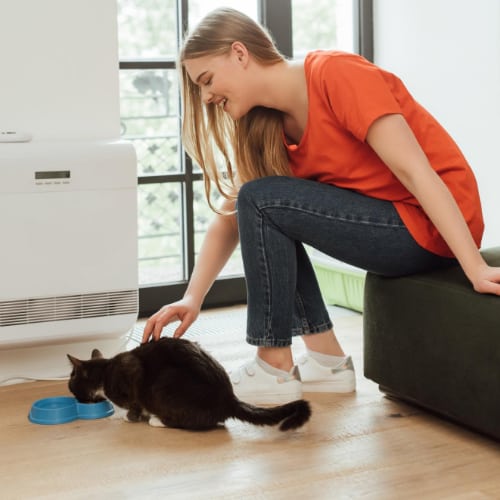
One of the main reasons cats shadow their owners is because they associate us with valuable resources. We provide vital necessities like food, water, treats, toys, access to favorite napping spots, and entry to coveted areas.
Cats depend completely on their human providers to meet all their needs. Following you around the house helps ensure your cat has full access to these important resources at all times.
For example, when you walk toward the kitchen, your cat eagerly trails behind in hopes of being fed. And at bedtime, they escort you to the bedroom to access warmth and nighttime snuggles. Sticking close gives them what they want and need.
Cats are creatures of habit and routine, and any disruption to their preferred schedule can cause them stress and anxiety. This can sometimes manifest in what appears to be grudge-holding behavior. If you've recently changed your cat's feeding time or litter box location, for instance, they may express their displeasure by following you around and acting out of sorts.
Check Also: Why Does My Cat Sleep on Me? Top Reasons and Theories
Curiosity and Mental Stimulation
In addition to resources, another factor driving following behavior is feline curiosity. As natural hunters, cats are inherently motivated to investigate anything novel or interesting in their environment. And to your cat, you are the most exciting thing around!
When you move about the house, your activities pique your cat's interest in what you might be doing. Their inquisitive nature compels them to trail along from room to room observing and participating in your daily routines. Satisfying their curiosity provides enriching mental stimulation.
Attention and Social Interaction
Cats also follow their owners to solicit positive social interaction like petting, cuddles and playtime. As social creatures, cats crave daily attention and affection from their human family. By shadowing you, your cat is communicating "Don't leave me! I need some quality time."
Following allows cats to request activities that fulfill their needs for companionship and bonding. Regular social interaction strengthens the emotional cat-human relationship.
Cats not only seek your company but also engage in playful behavior to stimulate their minds and keep themselves entertained. Consider some cat electronic toys, for example, to enrich your cat's playtime and provide them with exciting new activities.
Territorial Patrols
Part of natural feline behavior is patrolling territory to ensure security and familiarity. As beloved family members, cats view their owners as an extension of their territory.
By accompanying you around the house, cats are monitoring and learning about your activities within their domain. Following satisfies territorial drives and provides reassurance that all is well in their world.
Potential Problems with Following Behavior

While your cat's following behavior is generally harmless, excessive shadowing can become problematic in some cases. Knowing when it's an issue and how to address it is important.
Annoying or Problematic for Owners
For some owners, having a feline companion constantly underfoot can become aggravating or disruptive to daily activities. Tripping hazards, interference with cooking/cleaning, and invasion of personal space are common complaints.
It's also vital to train cats not to dart into unsafe areas like garages and basements. Following owners into these spaces can put them at risk. Working with a trainer/behaviorist can help curb unwanted trailing behavior.
Signs of Stress or Anxiety
While following is normal, a sudden excessive increase in clinging behavior may signal an underlying problem. Medical issues, changes in environment, new pets, or other stressors can trigger anxious following.
Excessive vocalizing, inappropriate urination, and destruction when alone are other potential signs of distress. Consulting a vet to rule out health problems combined with behavior modification is key.
Separation Anxiety
Some cats develop separation anxiety - intense, excessive distress when left alone. Symptoms include persistent following, vocalizing, urinating/defecating outside the litter box, and trying to escape when their person leaves.
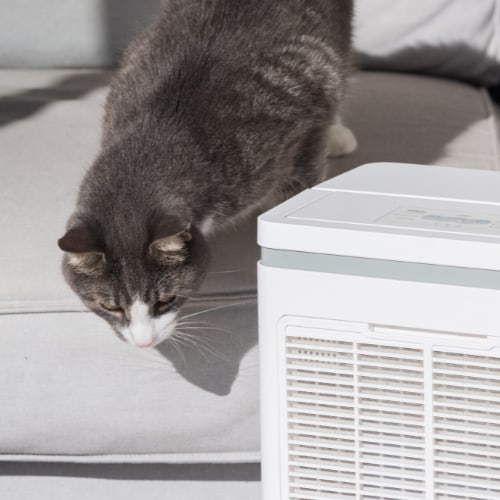
Gradual training with rewards for independence can help ease separation anxiety. Providing environmental enrichment when alone also reduces reliance on the owner's presence. In extreme cases, medication may be recommended.
While concerning, addressing the root cause of clingy, anxious following behavior through patience, training, and environmental management can help transform a stressed cat into a happy, healthy companion.
Frequently Asked Questions
Here are answers to some common questions about cats' following behavior to help you further understand the issue, its causes and its potential solutions:
Why does my cat follow me to the bathroom?
Cats likely follow owners to the bathroom out of curiosity, to patrol their territory, and because bathrooms contain intriguing things to play with. The sink, toilet, and shower are novel to cats.
Is it normal for my cat to follow me everywhere?
Yes, it's generally normal behavior for cats to follow their owners around the house. As long as your cat doesn't exhibit signs of distress when alone, following just means they want to be near you.
How can I get my cat to stop following me all the time?
You can train your cat not to follow using rewards for independence and keeping doors closed to some rooms. Offer engaging toys and activities when you're occupied. Still, some cats will always be Velcro kitties!
What does it mean if my cat follows me but doesn't want cuddles?
Some cats follow for security but don't enjoy prolonged physical contact. Their personality may be more aloof. But they still see you as their attachment figure and want to stay close by.
Should I worry if my cat starts following me more?
A moderate increase in following is usually nothing to worry about. But if your cat seems distressed, vocalizes excessively, has bathroom accidents, or acts destructive when alone, contact your vet to rule out medical issues. Gradual training can help ease any separation anxiety.
The key is understanding your individual cat's motivations for following and providing ample care, interaction, and environmental enrichment to meet their needs. Reach out to a cat behavior expert if you have any concerns about your feline friend's following habits.
Conclusion
In summary, cat following behavior has a variety of explanations rooted in natural feline instincts and needs.
At its core, following allows cats to stay close to their trusted human companion. As territorial animals that form close social bonds, cats see their owners as a source of security, resources, and affection. Shadowing your daily activities reinforces this attachment.
Other motivations like curiosity, boredom, attention-seeking, and territorial patrolling also drive following. Gaining insight into these innate cat behaviors helps us better understand our devoted feline friends.
While excessive following can become problematic, in general, it's a harmless and endearing cat mannerism. With proper training and enrichment, problematic following can be reduced. Overall though, this common behavior is a sign of the special cat-human bond.
By appreciating why our cats want to be near us, and providing adequate care, social interaction, and outlets for natural behaviors, following can be kept within reasonable limits. So the next time your shadow appears, remember it's a compliment!
Your cat just can't get enough of your entertaining company.

